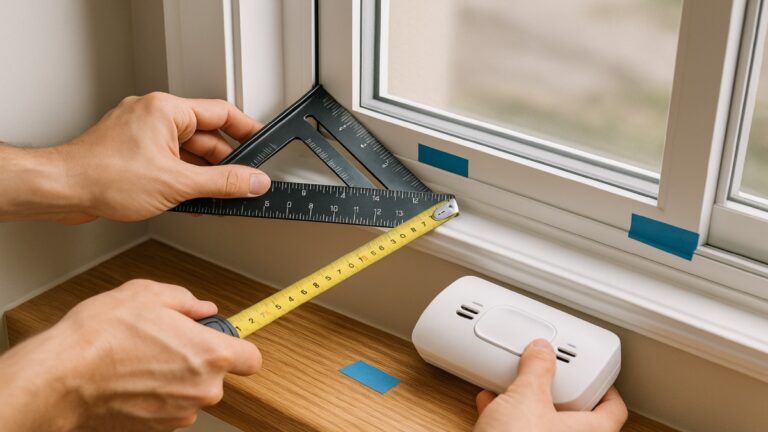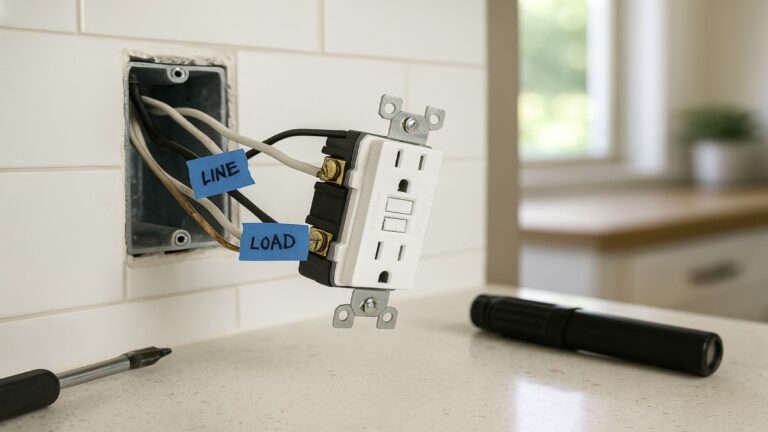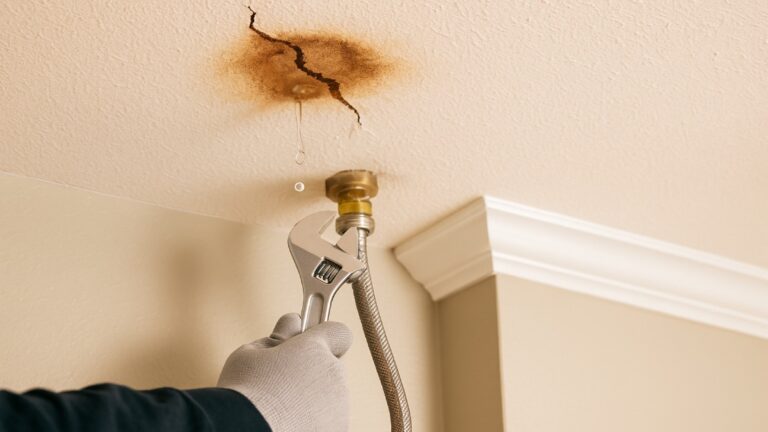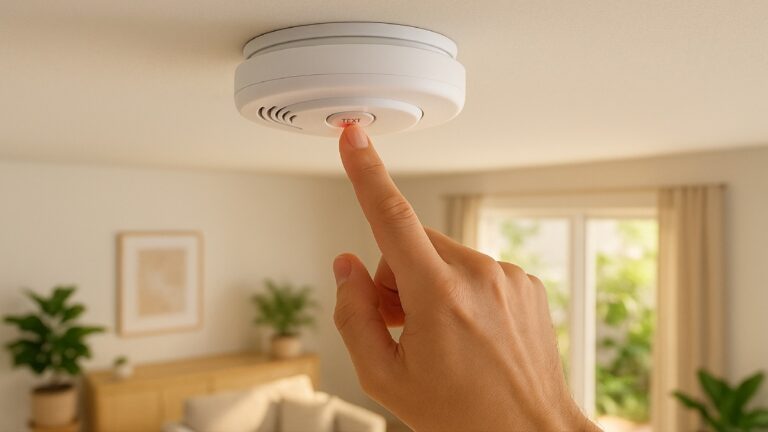Fix a Toilet That Won’t Flush or Keeps Running Easily
Few household issues are more frustrating than a toilet that refuses to flush or keeps running long after you walk away. The good news? Most of these problems have simple, inexpensive fixes you can handle yourself—no plumber needed. A quick inspection and a few adjustments can stop that endless trickle or weak flush in less than an hour.
This guide walks you through step-by-step solutions for both “won’t flush” and “keeps running” issues. You’ll learn how to test for leaks, adjust fill valves, replace flappers, and understand why your toilet acts up in the first place. Whether your tank is noisy, your flush is weak, or your water bill is climbing, this is your all-in-one repair plan.
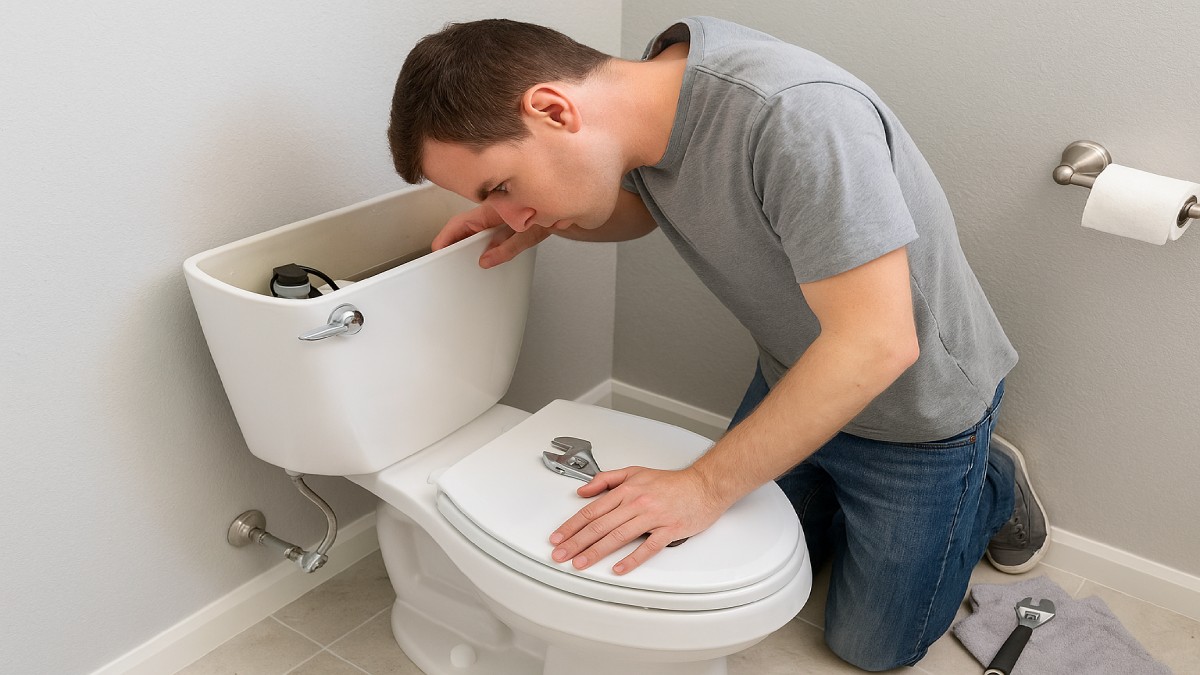
Identify the Problem Before You Start
Before replacing any parts, take a few minutes to identify what’s really happening inside your toilet tank. Each symptom—constant refilling, weak flush, or no flush at all—points to a different cause. You’ll save time and avoid unnecessary repairs by diagnosing the issue first.
Quick Leak Test You Can Do Right Now
If you suspect your toilet is leaking, perform the simple dye test recommended by EPA WaterSense. Add a few drops of food coloring or a dye tablet to the tank and wait ten minutes. If colored water appears in the bowl, the flapper or seal isn’t holding properly. That constant trickle can waste thousands of gallons a year, so it’s worth checking.
Listen, Look, and Lift the Lid
Remove the tank lid and set it aside carefully. Check if the water level sits about an inch below the overflow tube. Listen for hissing or running water. Look at the handle chain—it should lift the flapper smoothly without being too loose or tight. A few seconds of observation will often tell you if you’re dealing with a seal leak, an overflow, or a misaligned float.
Why Your Toilet Won’t Flush
If you push the handle and nothing happens—or the flush feels weak—don’t panic. The issue is usually mechanical or related to water flow. Here’s how to troubleshoot each possible cause and restore full power to your flush.
Handle or Chain Problems
The chain connecting the handle to the flapper must lift cleanly when you press the lever. If it’s too loose, the flapper won’t open fully. If it’s too tight, the flapper can’t seal afterward. Adjust the length so there’s about half an inch of slack. Make sure the handle moves freely and isn’t corroded or loose. Sometimes, a little tightening on the inside nut is all it takes.
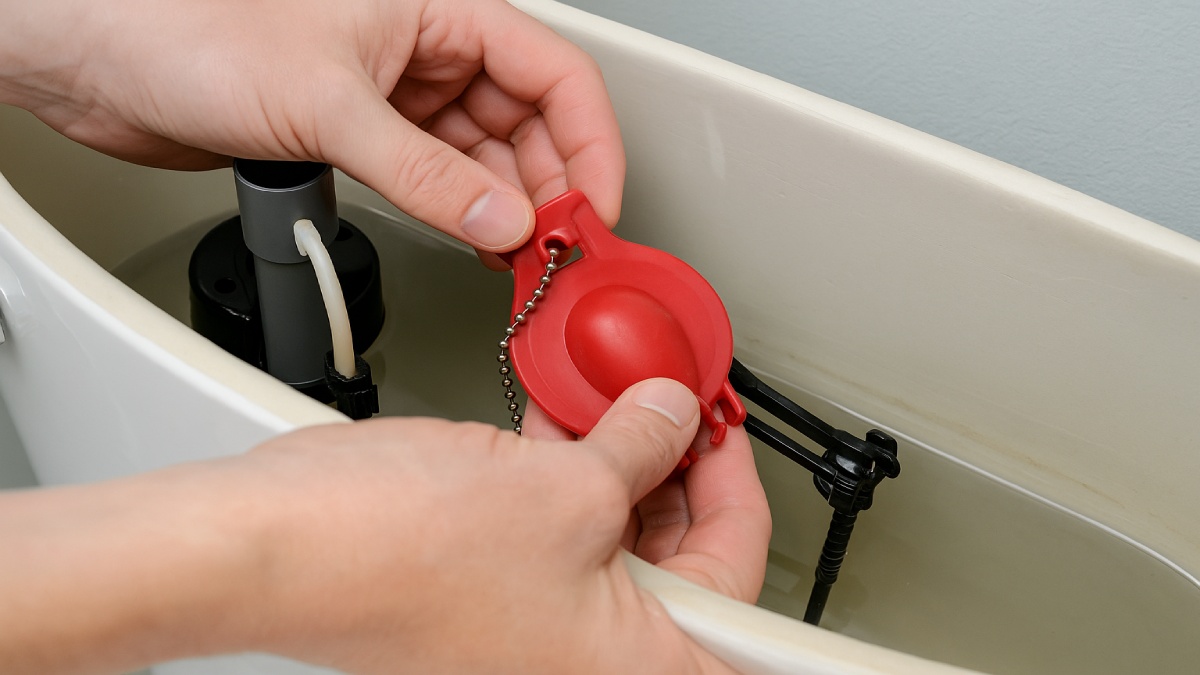
Low Water in the Tank
For a strong flush, the tank must hold enough water to create pressure. Look for the fill line marked on the inside wall of the tank. If the water level is below that line, the float or fill valve may need adjustment. Turn the screw or slide the clip on the float arm until the water sits just below the overflow tube. Refill and test again.
Partial Clogs or Drain Obstructions
A partial clog in the trap or drain slows water flow and weakens the flush. Use a flange plunger—specifically designed for toilets—to create a tight seal. Push down and pull up firmly several times. If the clog persists, try a toilet auger to break it up. Avoid chemical drain cleaners; they can damage porcelain and rubber gaskets.
Mineral Build-Up in Rim Holes or Jet
Over time, calcium deposits form inside the rim holes and siphon jet, restricting water flow. Use a wire hanger or cleaning brush to clear these openings. Pour a mixture of vinegar and water into the tank and let it sit for several hours before flushing. This helps dissolve mineral buildup and restore full flushing force.
Faulty Flapper or Flush Valve
A warped or hardened flapper won’t lift or seal correctly. If the rubber looks cracked, replace it. Turn off the water, drain the tank, unhook the chain, and snap in a new universal flapper or a brand-specific model (for example, Kohler canister seals). Reconnect the chain, leaving a small amount of slack, and test the flush.
Why Your Toilet Keeps Running
A running toilet is more than an annoyance—it can waste over 10,000 gallons of water a year. The most common cause is a leaking flapper or an overfilled tank. Fixing it usually takes just a few simple adjustments or a quick part replacement.
Flapper Seal Failure
If the dye test showed color in the bowl, the flapper isn’t sealing properly. Shut off the water at the supply valve, flush to empty the tank, and replace the flapper. Clean the seat with a sponge or cloth before installing the new one. When done right, you’ll hear the tank refill once—and stay quiet afterward.
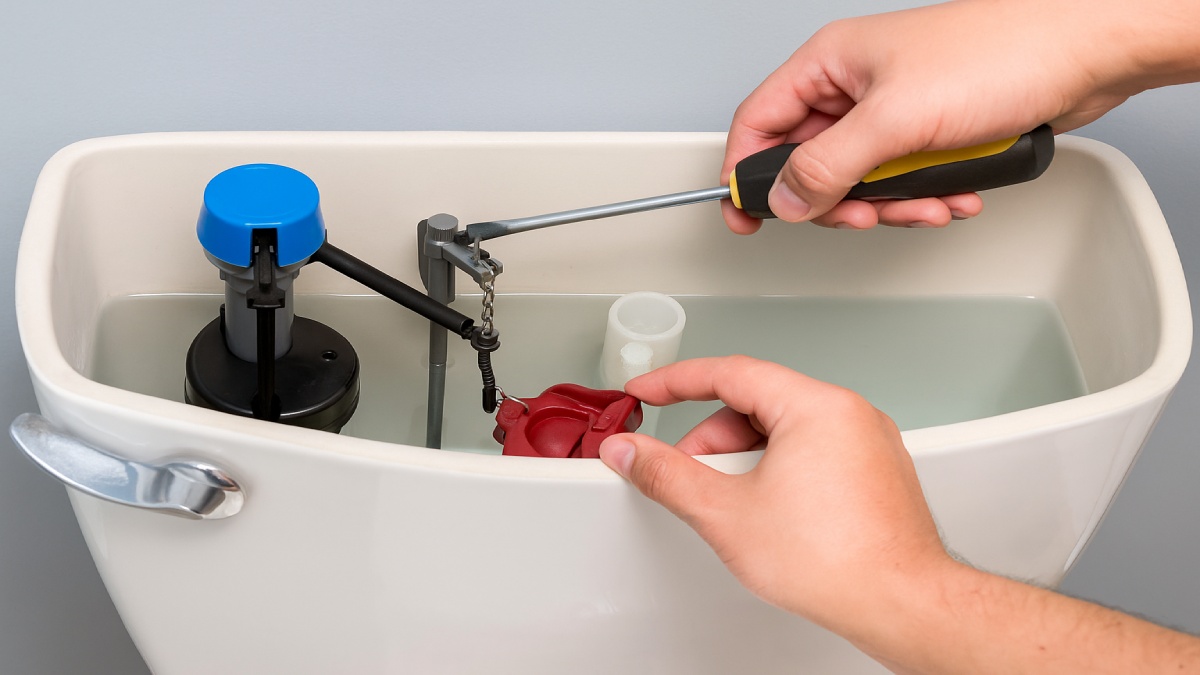
Fill Valve Issues or High Float Setting
When water constantly spills into the overflow tube, the float is set too high. Adjust the float screw or clip so the water level stops about an inch below the tube. If the valve hisses or won’t shut off, replace it entirely. A new fill valve kit costs under $20 and comes with clear instructions. Many homeowners prefer models like the Fluidmaster 400A or 400H for quiet refills.
Refill Tube Inserted Too Deep
If the refill tube extends too far into the overflow, it can siphon water and trigger nonstop refilling. The fix is simple: remove the tube and clip it so it rests just above the overflow opening. This breaks the siphon and stops the constant cycle.
Loose Flush Handle or Chain Tension
Sometimes the handle sticks, keeping the flapper open. Tighten the mounting nut inside the tank, but don’t overtighten—it’s reverse-threaded and can crack. Ensure the chain isn’t pulling the flapper up too far or holding it slightly open. Adjust until the handle moves smoothly and the flapper seals firmly.
Cracked Overflow or Leaky Gasket
If you’ve replaced the flapper and valve but water still leaks, inspect the overflow tube for cracks. Also, check the gasket between the tank and bowl. These components rarely fail, but when they do, water escapes constantly into the bowl. Replacing them may require draining the tank and unbolting it, so consider calling a pro if the damage looks extensive.
Step-by-Step Fix for Running or Weak Toilets
Now that you know the main culprits, here’s a practical repair sequence anyone can follow. You’ll only need basic tools, a towel, and patience.
Tools and Supplies
- Adjustable wrench or pliers
- Flapper replacement kit
- Fill valve kit (optional)
- Bucket or sponge
- Dye tablets or food coloring
- Towel and rubber gloves
Step 1 — Turn Off Water and Drain Tank
Turn the shutoff valve clockwise to stop water flow. Flush once to empty the tank. Use a sponge or towel to remove the remaining water from the bottom.
Step 2 — Inspect and Replace Flapper
Unhook the chain and remove the old flapper. Check for mineral buildup around the seat. Clean it thoroughly, then attach the new flapper. Make sure the hinges snap securely onto the pegs. Reattach the chain, leaving just enough slack for full movement.
Step 3 — Replace or Adjust Fill Valve
If the fill valve is corroded or noisy, it’s best to replace it. Unscrew the supply line from the tank, loosen the retaining nut underneath, and remove the old valve. Insert the new one, tighten the nut, and reconnect the supply line. Adjust the float height according to the manufacturer’s markings and make sure the refill tube clips above the overflow.
Step 4 — Reconnect Chain and Handle
Attach the handle arm to the chain and test the handle motion. The flapper should lift fully and fall back without tension. Tighten the handle nut if it feels wobbly.
Step 5 — Turn Water On and Test
Turn the supply valve back on slowly. Let the tank fill, then flush and watch. The tank should refill once and stop quietly. Perform the dye test again after an hour to confirm there’s no silent leak.
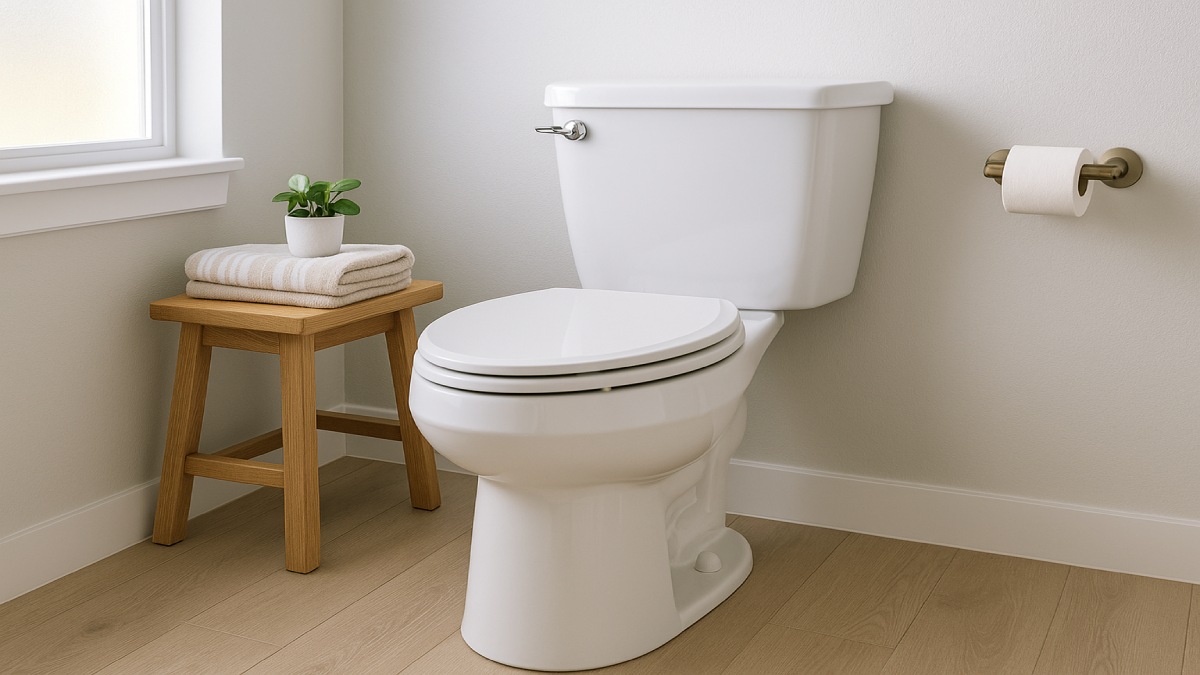
Prevent Future Toilet Problems
Regular maintenance keeps your toilet quiet, efficient, and leak-free. Once or twice a year, lift the tank lid and check for worn parts. Make sure the flapper still feels flexible and the chain hasn’t rusted. Clean mineral deposits using white vinegar instead of harsh cleaners that degrade rubber seals.
Every few months, inspect the water level. If it’s creeping higher, tweak the float screw to prevent overfilling. For extra water savings, consider upgrading to a WaterSense-labeled toilet or valve kit. These systems use less water per flush and pay off quickly through reduced utility bills.
When to Replace Instead of Repair
If you find yourself replacing parts repeatedly, the toilet might simply be too old or inefficient. Models from the early 1990s or before use far more water than modern designs. New WaterSense-certified toilets flush just as powerfully with about 1.28 gallons—saving thousands of gallons yearly. If cracks form in the tank or bowl, or if repairs exceed half the cost of replacement, upgrading makes financial sense.
Common Questions About Toilet Repairs
How do I know if my toilet flapper is bad?
If your toilet runs after every flush or water seeps into the bowl without being flushed, the flapper likely has warped edges or mineral buildup preventing a tight seal.
Can I fix a running toilet without turning off the water?
It’s best to turn it off. Working with live water pressure risks splashing and waste. Shutting the valve takes seconds and prevents overflows while you work.
Are universal flappers OK for all toilets?
Universal flappers fit most standard 2-inch flush valves, but some brands like Kohler or American Standard use canister or 3-inch designs that need specific parts. Always match the replacement to your brand’s specs.
Why does my toilet flush slowly sometimes?
Mineral deposits in the rim holes, a low water level, or a partial clog in the trap can restrict flow. Cleaning the rim jets or adjusting the fill valve usually restores full power.
How much water can a running toilet waste?
A constantly running toilet can waste up to 10,000 gallons per year—enough to fill a backyard pool. Fixing leaks protects both your wallet and the environment.
Should I call a plumber?
If you’ve replaced the flapper, adjusted the valve, and checked for cracks but the issue persists, call a professional. Persistent leaks might indicate deeper problems with the flush valve seat or internal tank components that require specialized tools.
Conclusion
Most toilets that won’t flush or keep running are easy to repair with patience and a few basic parts. Replacing a flapper, adjusting a float, or cleaning mineral buildup often restores perfect performance. Each fix saves water, lowers your bill, and prevents long-term damage to your plumbing. Keep a small repair kit on hand, check the tank every few months, and enjoy the peace of mind that comes from a toilet that works as quietly as it should.


